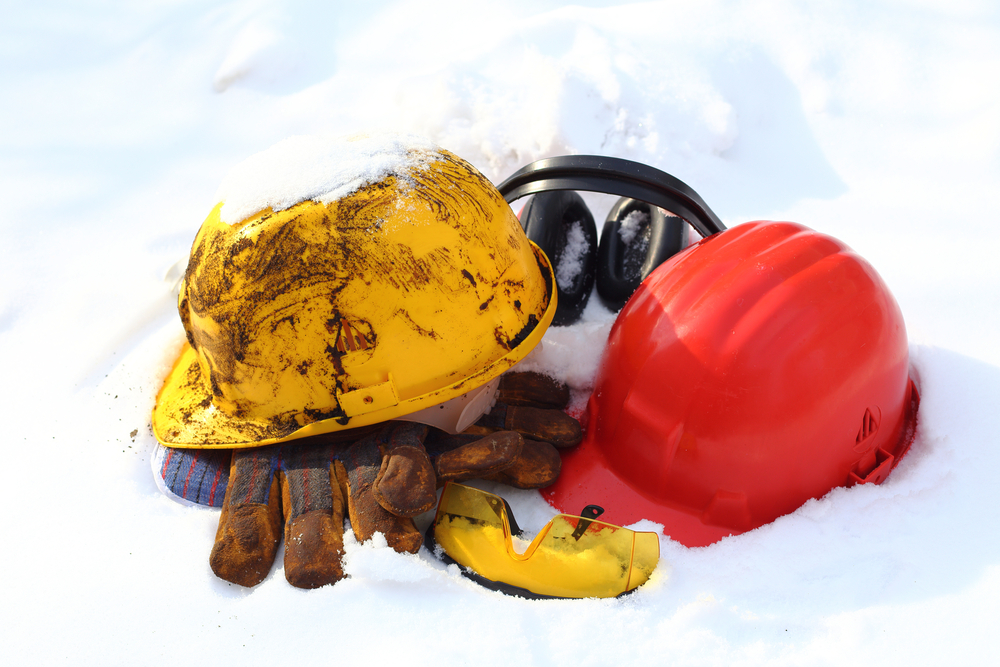The winter season is upon us once again, and with the colder weather come a unique set of hazards that can cause injuries and illness among the workforce. Here are some tips for protecting your employees from cold stress, frostbite, and hypothermia.
OSHA urges employers to take precautions to protect workers from cold stress. The agency recommends the following:
- Train workers to recognize the conditions that can lead to cold stress, its symptoms, how to prevent it, and what to do to help those who are affected.
- Monitor workers’ physical condition during cold weather.
- Schedule frequent short breaks in warm, dry areas, and schedule outdoor work during the warmest part of the day.
- Know the temperature and wind chill in order to gauge workers’ exposure risk and make a plan to complete outdoor tasks safely.
- Have employees work in pairs and monitor one another for signs of cold stress.
If your employees will be outside working in the cold—whether they’re working for you or clearing snow from their own driveways—it’s imperative that they understand the hazards of extreme cold and take steps to protect themselves from frostbite and hypothermia.
Frostbite and Hypothermia
Frostbite happens when skin freezes from exposure to severe cold or contact with very cold objects, damaging skin and blood vessels. Extremities such as fingers, toes, cheeks, nose, and ears, are most likely to be affected by frostbite. In severe cases, frostbite causes tissue death, which can require amputation or lead to a loss of function in a body part.
Frostbite is characterized by numbness, tingling, stinging, or aching sensations in the affected body part. The skin may be waxy or white in color; in severe cases, these symptoms can be followed by heat, redness, swelling, blistering, and a color change in the skin to red and then black.
To treat frostbite, follow these do’s and don’ts:
- DO warm the frostbitten parts gradually with body heat.
- DON’T heat the skin suddenly using extremely hot water, a fireplace, or other high-heat sources.
- DON’T rub the frostbitten area. This can cause more damage.
- DO use warm (not hot) water between 102 and 110 degrees Fahrenheit to warm the frostbitten body part.
- DO apply a sterile dressing to blisters.
- DO get medical attention for severe cases of frostbite.
Hypothermia occurs when the body temperature falls below 96 degrees Fahrenheit. In mild cases, a victim may shiver uncontrollably, and his or her lips and fingers may turn blue. If mild hypothermia isn’t treated, the victim may become confused and disoriented, heart rate and breathing will slow down, and speech may be slurred. In severe cases, a victim may lose consciousness, and his or her heart rate may be so slow that it is difficult to find a pulse. Immediate medical attention is necessary in these cases.
Medical help should be sought for all cases of hypothermia, even mild ones. While waiting for medical attention, the following first aid can help a hypothermia victim:
- Remove the victim from the cold environment to a warm shelter.
- Remove wet and cold clothing.
- Wrap the victim in dry, nonheated blankets.
- Warm the internal areas (neck, chest, abdomen, groin) first. Arms and legs should be warmed last.
- Do not place the victim in front of a hot fire or apply heated blankets or pads.
Prevention Guidelines
Share these tips for working safely in cold conditions and preventing frostbite and hypothermia with your employees:
- Cover as much of your skin as possible by wearing gloves, a hat or hood, a scarf, and other clothing if necessary. Make sure to protect your ears, face, hands, and feet.
- Wear waterproof, insulated boots and warm socks.
- If you can, wear mittens rather than gloves because they keep your hands warmer.
- Dress in several layers of loose, warm clothing, and choose synthetic materials or wool over cotton.
- If clothing becomes wet, remove it and change into dry clothing as soon as possible.
- Avoid touching cold metal surfaces with bare skin.
- Consume warm foods and drinks, but avoid alcohol and caffeine.
- If possible, avoid activities that lead to heavy sweating.
- Take periodic breaks in a warm, sheltered area.
As with any other safety hazard, preventive action is key. With these tips in your safety toolbox, you can keep your workforce warm, safe, and productive throughout the chilling winter months.

